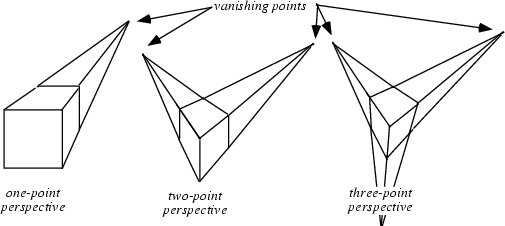|
|
|

Perspective is the art and mathematics of realistically depicting 3-D objects in a 2-D plane. The study of the projection of objects in a plane is called Projective Geometry. The principles of perspective drawing were elucidated by the Florentine architect F. Brunelleschi (1377-1446). These rules are summarized by Dixon (1991):
See also Leonardo's Paradox, Perspective Axis, Perspective Center, Perspective Collineation, Perspective Triangles, Perspectivity, Projective Geometry, Vanishing Point, Zeeman's Paradox
References
de Vries, V. Perspective. New York: Dover, 1968.
Dixon, R. ``Perspective Drawings.'' Ch. 3 in Mathographics. New York: Dover, pp. 79-88, 1991.
Parramon, J. M. Perspective--How to Draw. Barcelona, Spain: Parramon Editions, 1984.